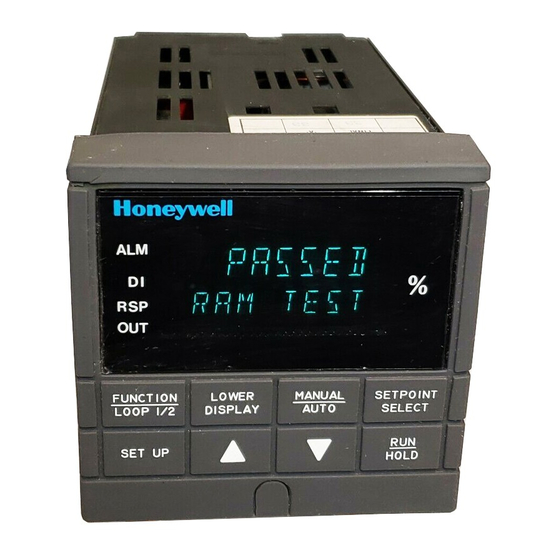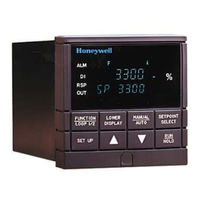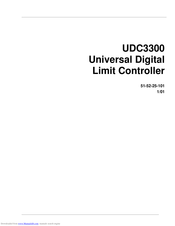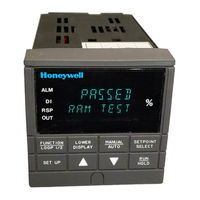
Honeywell UDC3300 Manuals
Manuals and User Guides for Honeywell UDC3300. We have 6 Honeywell UDC3300 manuals available for free PDF download: Product Manual, User Manual, Instruction Manual
Honeywell UDC3300 Product Manual (294 pages)
Universal Digital Controller
Brand: Honeywell
|
Category: Controller
|
Size: 1 MB
Table of Contents
-
-
-
Overview47
-
Status Group84
-
-
-
Overview91
-
Calibration Data156
-
Status Test Data158
-
-
-
Overview159
-
Operating Modes168
-
Setpoints172
-
Alarm Setpoints183
-
Accutune206
-
Carbon Potential214
-
Healthwatch216
-
-
-
Overview217
-
Program Contents218
-
-
-
Overview231
-
-
-
Overview245
-
-
-
Overview255
-
Power-Up Tests259
-
Status Tests260
-
Background Tests262
-
Maintenance282
-
Advertisement
Honeywell UDC3300 Product Manual (120 pages)
Universal Digital Limit Controller
Brand: Honeywell
|
Category: Controller
|
Size: 0 MB
Table of Contents
Honeywell UDC3300 User Manual (118 pages)
Universal Digital Controller
Brand: Honeywell
|
Category: Controller
|
Size: 0 MB
Table of Contents
-
-
-
Overview29
-
Status Group61
-
-
4 Operation
63-
Setpoints67
-
Accutune84
-
Health Watch91
Advertisement
Honeywell UDC3300 User Manual (95 pages)
Brand: Honeywell
|
Category: Controller
|
Size: 0 MB
Table of Contents
Honeywell UDC3300 User Manual (84 pages)
Universal Digital Controller
Brand: Honeywell
|
Category: Controller
|
Size: 0 MB
Table of Contents
-
-
-
Overview27
-
Status Group46
-
-
4 Operation
47
Honeywell UDC3300 Instruction Manual (4 pages)
Universal Digital Controller
Brand: Honeywell
|
Category: Controller
|
Size: 0 MB





